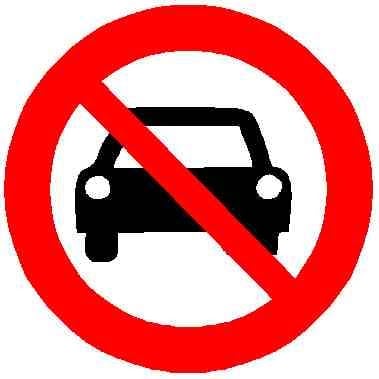Sometimes when watching videos on effective ways of public transport and trams come up, I get a bit annoyed at people not addressing the fact that they seem to share the road with cars. Why do people twerk for trams so much as a form of light rail if they share the road with cars and are subject to being affected by traffic? Doesn’t that just make them rail buses without their own bus lane? Doesn’t that make them more obsolete? Why do people like them so much?
Edit: Also, does anyone have any resources about the cost to benefit ratio of different intratown/city forms of transport (bike lanes, BRT, trams and other forms of light rail, subways etc)? Would be much appreciated.
Trams do not have to share the road with cars. They can have (and often do have) their own dedicated right of way.
In those situations the tram only really interacts with cars on intersections, similar to level crossings for rail.I think it’s more helpful to see a tram as an upgrade on a bus, rather than a downgrade on rail.
The main advantages of trams over busses are the increased capacity, and increased efficiency (less fuel, fewer drivers per passenger needed)And even at intersections they usually are given priority over cars.
Yeah this makes sense. I come from a country that doesn’t have many trams and when I do see them they tend to be interacting with the road which is probably where my perception comes from.
Definitions are loose but generally a tram is defined as sharing the road with cars, aka streetcar in North America. If it has its own dedicated right of way, then it’s a light rail. Light rail can be separated all the way to a metro system if you want. (I think we shouldn’t use the term tram at all, use streetcar which is self explanatory or light rail to mean dedicated right of way.)
don’t give in to tramsphobia.
Depends on the location. If done right, trams can be the single most efficient form of intra-city transit. Treating trams like cars is not doing it right.
My city has trams that are grade-separated from car traffic for most of their routes, but often run alongside cars within their own “lanes”. Cars can still use that lane for maneuvers and overtaking, but whenever a tram approaches, it has the absolute right of way.
Tram tracks are much narrower compared to bus-sized streets. They can run through places where roads can’t be built, and bypass busy intersections. They’re also quieter, less disruptive (see: grassy tram tracks), less polluting (no asphalt dust or tyre particles), more durable, and more efficient (steel rolling on steel).
Trams usually don’t have to care about ground clearance. This allows them to be built with a much lower floor. Running on fixed tracks also allows them to perfectly align with the platform at stops, which makes wheelchair accessibility trivial.
Unlike trolleys, trams can use pantographs to connect to the overhead wires, which is much simpler and less likely to fail compared to trolley poles, which require switching whenever the routes diverge, and can get caught on the wires. They also don’t have to carry backup batteries or combustion engines.
Removed by mod
Fantastic. So a nice small town can really rely on well planned out bike paths with a good tram network if they can afford the upfront costs. If not, then a BRT system or similar with separated bus lanes would be the next best thing, making sure that these “mid” to “short” distance forms of transports linl well with the town’s train station(s).
But they’d probably do it in the opposite order. As a town evolves its bus network into something more mature, trams may be a next step. However, I do think BRT will be chosen over trams every time, for the cheaper infrastructure
The problem with this though is if a town/ city can afford a tram network but chooses not to in order to cut corners for upfront costs, it shows a lack of commitment. The wrong government/ council comes into power and a BRT us getting rolled back straight away for car centric infrastructure again.
They have their own lanes most of the time and only rarely have to share with buses or cars in Switzerland for example.
People like them because they can be powered via electricity and offer a smoother ride compared to buses or cars.
Thank you
Trams are great for short distances. I often use them to get from one end of the business district to the other, as it’s slightly faster than walking and they’re free.
However I once used the tram to get from work to my kid’s baseball training and it took over an hour. I later realised that I’d taken the longest tram route on the planet (Melbourne CBD to Vermont). It’s much slower than a car because it spends most of its time letting passengers on and off.
Well for starters a tram can move a lot more people than a bus with just 1 driver.
You have more safety in adverse weather conditions.
They usually last wayy longer than buses. (so more cost effective)
I’m not completely sure on the traffic one, like, they have their own lane, and in my country you cannot use it so could you elaborate on this one?
Of course a bus is better for flexibility, but for fixed travel routes the tram just seems a lot better for me.
Sure. Some cities where I come from where trams exists have roads that have tram tracks in the middle of them. As others have alluded to this is probably rare - I don’t really know as the last time I took a tram I was too young to remember it and I live in a town that has no trams at all.
Because of my experience with seeing tram tracks on roads I assumed they shared significant parts of their journey with road cars which made me think they’re subject to traffic jams.
It all depends, really. As other people have pointed out, you can allay the problems of car traffic by giving trams right-of-way, dedicated lanes or both.
I’ve tried to summarise what I understand are the key pros and cons of trams vs. buses below. As you can see, I’ve come up with more positives than negatives, but it really does depend on the particular situation in each town or city. Mixed modes are always best, IMO!
Upsides
-
Trams are generally easier to electrify than buses, so they can be more eco-friendly in that sense, though this is changing with better charging infrastructure, hydrogen fuel cells, etc., for buses.
-
Trams can also be built with very low clearance, making it near impossible for them to run someone over, which is a good safety feature.
-
They’re generally quieter than buses, too.
Mixed
-
Trams cost more to build compared with buses (because you need to lay tracks) but then cost less in the longer term (because rails and metal wheels are more efficient than tarmac roads and rubber wheels, and wear out more slowly). So, which is best from a cost POV depends on your exact situation.
-
Tram rails can be laid with grass underneath, which is more eco-friendly for numerous reasons. Of course, this also entails a downside if you want to use that space for other vehicle types. Again, another one where a planner would need to weigh costs and benefits.
Downsides
- The key downside is that they need tracks: this makes them much harder to divert around some kinds of temporary obstructions which buses can easily manoeuvre around.
The key downside is that they need tracks: this makes them much harder to divert around some kinds of temporary obstructions which buses can easily manoeuvre around.
If you have a more dense network, you can always divert lines on other streets if there are any issues. My city is also using temporary switches and trams with driver cabins at both ends whenever there are works going on.
Thanks
-
I get a bit annoyed at people not addressing the fact that they seem to share the road with cars.
So you’re saying the cars are the problem…
My city has started separating tram lines from the roads with fences, and it’s all just great. We had next to no bus lanes until this year, and I still have none where I live. The bus sits in traffic and can stop for around 5-10 times at a traffic light, while the tram only stops once. Sometimes even the bus driver opens the doors before getting to any station. This never happened with trams. On the other hand, if one tram breaks, the others have to wait for it to be moved - although this doesn’t happen that often on the line I’m using the most.
Another thing to note is that even when there is no separation from the traffic and the lines are asphalted, it’s still illegal to go on the tram tracks (albeit this is one of the rules that is not that well enforced, because our police sucks, it’s good that it’s there).
Our municipality also purchased longer trams and plans to purchase some more, some even longer than what we have now, but it’s great. It’s a good way of making public transit more attractive for the people, hopefully getting them out of the cars and solving congestion.
We also have a metro system, which is also great and highly appreciated, but it doesn’t go anywhere in the city, and its extension has been rather slow in the last 30 years. The company managing it is also owned by the government directly, so that’s another hurdle in its development. The tram network, on the other hand, is owned by the local transit company, and is denser. I’m sure there will be more extensions to it if the municipality will throw the right money at the right projects.
god i wish this was me
Denver and Portland have pretty good light rail. They handle traffic areas well, and can move quickly between areas where they have long stretches of unobstructed rail. My only complaint is limited stations where you can board - like, if I have to walk a mile to the nearest station and a mile back with my groceries or whatever after leaving the train, that’s not ideal.
A bit of a history of trams: they existed before the modern electric bus, as horse trams, because they could carry more people. Most tram networks have been removed since the introduction of the bus. Modern trams however can increase capacity a lot, and even small trams can fix hard problems like in the Lisbon inner city. Many modern trams are somewhere on the light rail spectrum and are both faster and often have more dedicated right of way, so they don’t get stuck in traffic. Understanding this, you can see how you can often also fix the same issues with dedicated bus lanes, but a tram track also fixes refueling properly. A third option is of course a trolley bus or a trolley/battery hybrid. Every location needs something that fits the local circumstances.
There’s a lot of confusion with terms, the definitions are loose to begin with, and a lot of misuse as well, so terms are all a mess.
From what I see a tram (a streetcar in North America) is defined as sharing the road. But there are lots of people (and a certain prolific youtuber) that just wants to call everything a tram or a tram-[insert modifier].
A light rail has a dedicated right of way and as many grade separations as you want to pay for, all the way up to what’s commonly called a metro. Too many people are incorrectly calling these trams.
As someone who had regularly traveled by bike on a road with tram tracks: This is definitely not fun, and I simply don’t understand why the anti-car community hypes them. It’s like shooting themselves in the foot.
Uh just don’t ride on the two tiny metal rails on each side of the lane?
Would have done so if possible.






